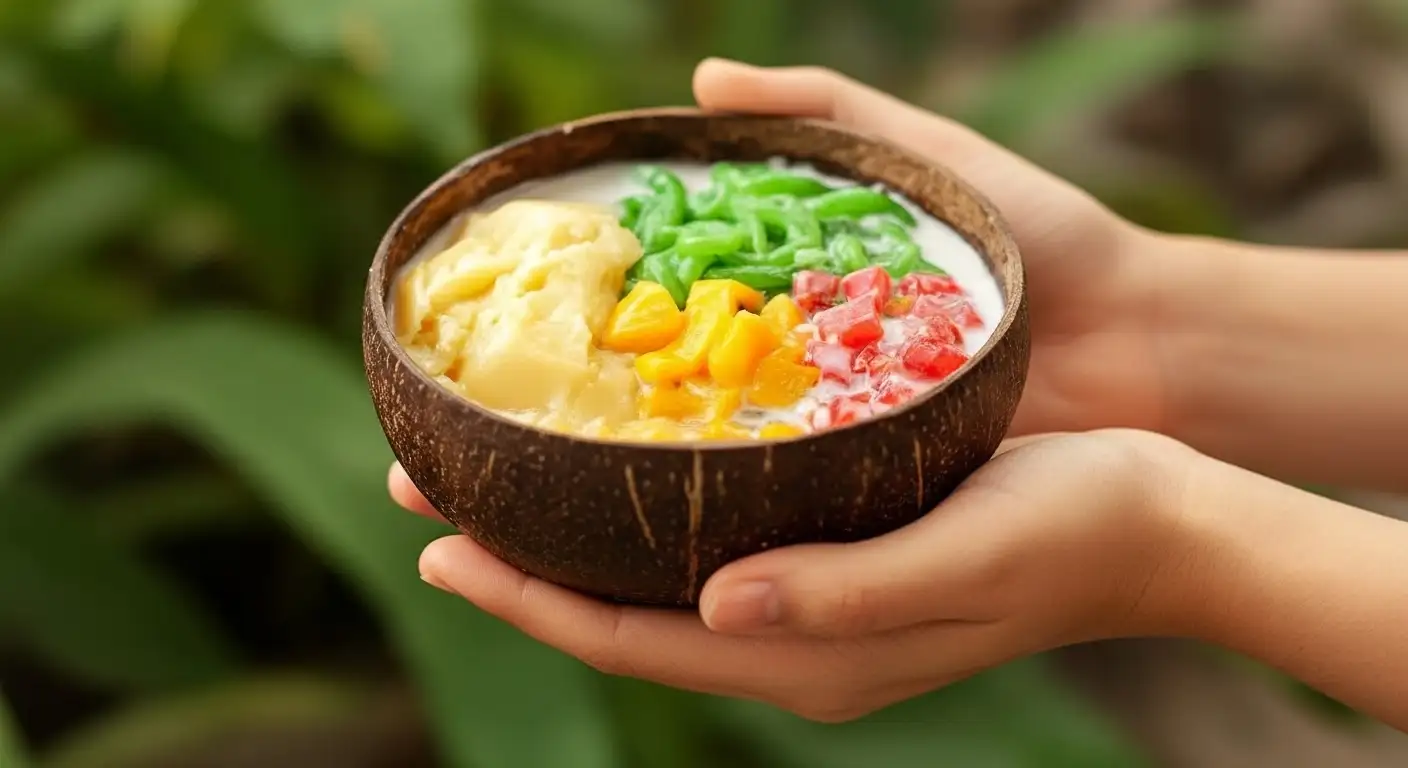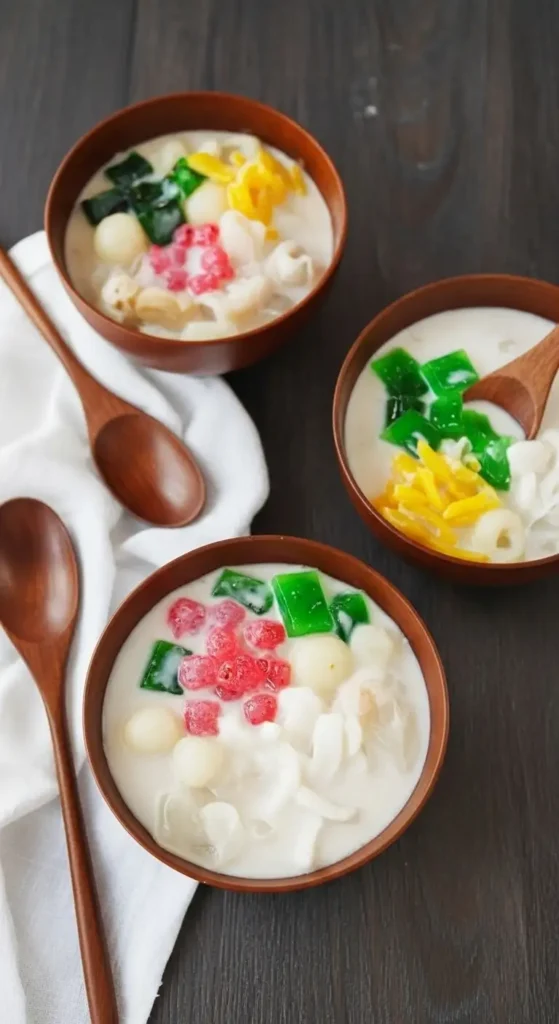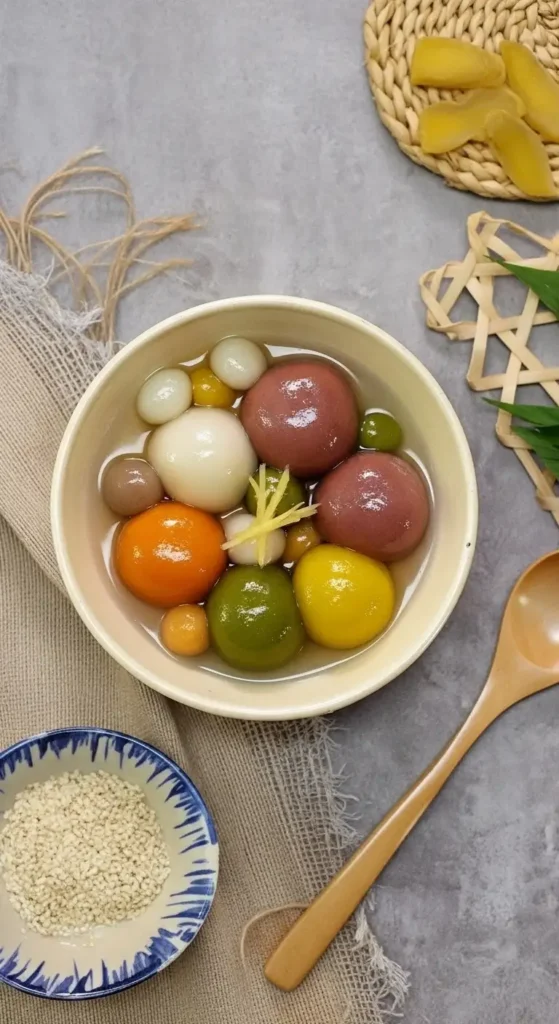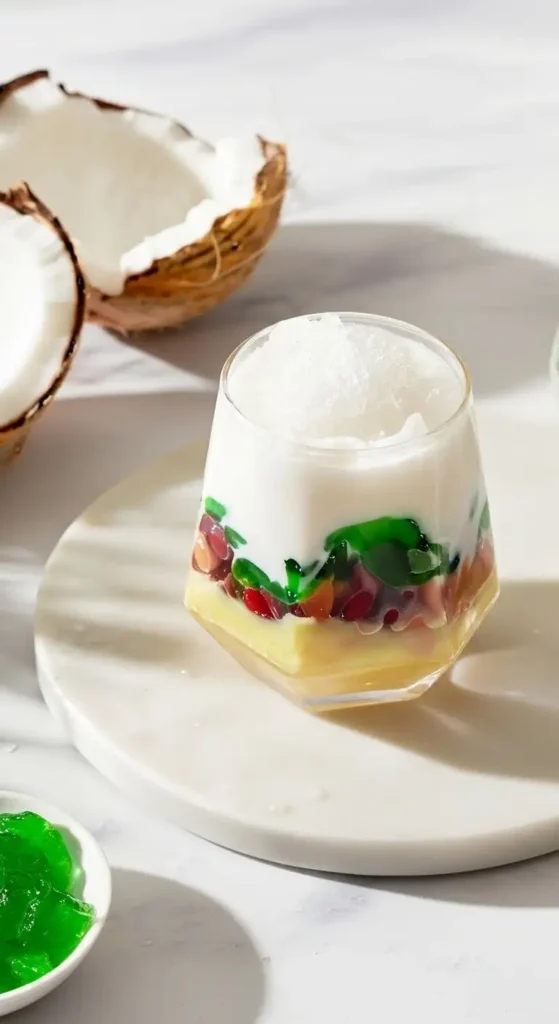Chè (pronounced Cheh) is not just one dessert; it is the collective name for a vast and delightful category of traditional Vietnamese sweet beverages, sweet soups, puddings, and gruels. Found everywhere from bustling street corners to elegant restaurants, Chè offers an unparalleled exploration of textures, flavors, and colors. If you want to experience the true variety of Vietnamese street food, Chè is a must-try.
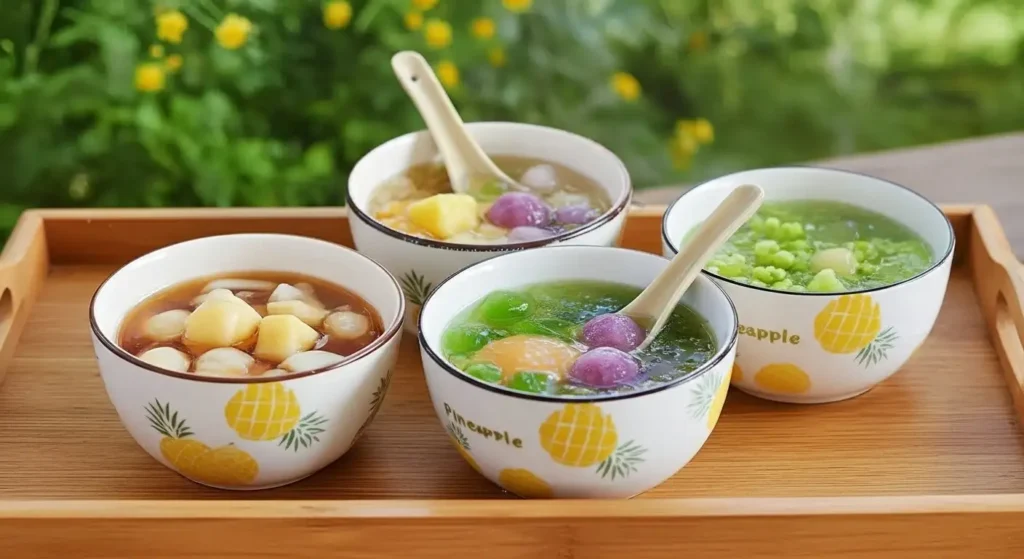
Chè: The Basics of the Vietnamese Sweet Soup
What it is: Chè literally translates to ‘sweet soup’ or ‘sweet gruel,’ but the term encompasses any sweet, often soupy or pudding-like, dessert. It is characterized by the use of complex, hearty ingredients cooked in water or coconut cream and sweetened with sugar.
Core Ingredients: The foundation is typically made from a mix of legumes, tubers, grains, and fruits. Common staples include:
Beans: Mung beans (đậu xanh), black-eyed peas, red kidney beans (đậu đỏ).
Grains/Tubers: Glutinous rice, taro, cassava, sweet potatoes.
Textural Elements: Tapioca pearls, jelly (clear, grass, or colored agar), and dumplings.
Fruits: Longan, jackfruit, mango, banana, and lychee.
Flavor Profile: Chè is a masterpiece of textures and contrasting tastes: creamy (from coconut milk), chewy (from tapioca/jelly), rich (from beans), and sweet. It’s also considered a healthy snack, often rich in fiber and protein.
A Spectrum of Chè Varieties
With hundreds of variations across the country, Chè types are usually named after their main ingredient (e.g., Chè Chuối is Banana Chè). Here are some of the most popular and distinct types:
| Chè Variety | Key Ingredients | Regional Specialty / Notes |
|---|---|---|
| Chè Ba Màu (Three-Color Chè) | Red beans, yellow mung bean paste, green pandan jelly, coconut milk, and shaved ice. | A quintessential Southern (Saigon) street food, known for its vibrant layered appearance. |
| Chè Trôi Nước (Floating Dumpling Chè) | Glutinous rice dumplings filled with sweet mung bean paste, served in a warm, fragrant ginger syrup. | A Northern/Central classic, traditionally eaten hot, especially in winter. |
| Chè Bắp (Corn Chè) | Sweet corn cooked with glutinous rice or tapioca starch, and topped with coconut cream. | Popular in the Central region (like Hội An), often made with fresh, locally grown corn. |
| Chè Đậu Xanh (Mung Bean Chè) | Cooked mung beans, sugar, and coconut milk, often served as a simple, creamy, everyday dessert. | Universally popular across Vietnam. |
| Chè Thập Cẩm (Mixed Chè) | A "mixed sweet soup" of many ingredients like beans, jelly, lotus seeds, and tapioca, topped with syrup and ice. | The ultimate customizable dessert, literally meaning "ten-ingredient sweet soup." |
| Chè Khúc Bạch (Almond Panna Cotta Chè) | Cubes of jellied milk (flavored with almond/pandan), longan, lychee, and syrup, often served cold. | A modern, trending dessert that feels lighter and fresher. |

How to Enjoy Chè
Chè can be enjoyed in different ways depending on the type and the weather:
Hot or Cold: Chè varieties are naturally classified by serving temperature.
Cold: Most varieties, particularly those with fruit, jelly, and coconut milk (like Chè Ba Màu or Chè Thái), are served in a tall glass with generous amounts of shaved or crushed ice.
Hot (Warm): Soupy or dumpling-based varieties (like Chè Trôi Nước or simple Chè Đậu Xanh) are served warm in a small bowl, often to combat the chill of Northern winters or simply enjoyed for their comforting quality.
The Technique: When served cold with ice in a glass or bowl, the key is to use the long spoon provided to thoroughly mix all the ingredients, syrup, and coconut milk with the ice before consuming. This ensures you get a blend of all the different textures and flavors in every spoonful.
The Time: Chè is generally not considered a formal dessert after a meal, but rather a popular street snack or afternoon/evening indulgence. It is eaten throughout the day and year-round.
Regional Differences: North, Central, and South
The cuisine of Vietnam’s three regions is distinct, and Chè perfectly reflects these differences, particularly in its flavor intensity and ingredient focus.
| Region | Flavor & Style Characteristics | Signature Chè Varieties |
|---|---|---|
| Northern Vietnam (Bắc) | Refined, Subtle, and Less Sweet. Reflects the North's generally milder and more frugal culinary style. Desserts often focus on traditional, seasonal ingredients and are often served warm. | Chè Sen (Lotus Seed Chè), Chè Cốm (Young Green Rice Chè), Chè Trôi Nước (Glutinous Rice Balls). |
| Central Vietnam (Trung) | Balanced with Royal Influences. Reflects the sophistication of Hue's former imperial capital cuisine. Chè can be intricate, often incorporating special ingredients like roasted pork (in Chè Bột Lọc Heo Quay), but remains generally balanced. | Chè Bắp (Corn Chè) (especially in Hội An), Chè Bột Lọc (Tapioca Powder Chè). |
| Southern Vietnam (Nam) | Bold, Rich, and Very Sweet. Due to the tropical climate and abundant resources (coconut, sugarcane, fruit), Southern Chè uses a generous amount of coconut milk and sugar. It features a much wider range of ingredients, jellies, and tropical fruits, and is almost always served cold with ice. | Chè Ba Màu (Three-Color Chè), Chè Thái (Thai-inspired Mixed Fruit Chè), Chè Chuối (Banana Chè), Chè Bà Ba (Taro, Cassava, and Mung Bean Chè). |
